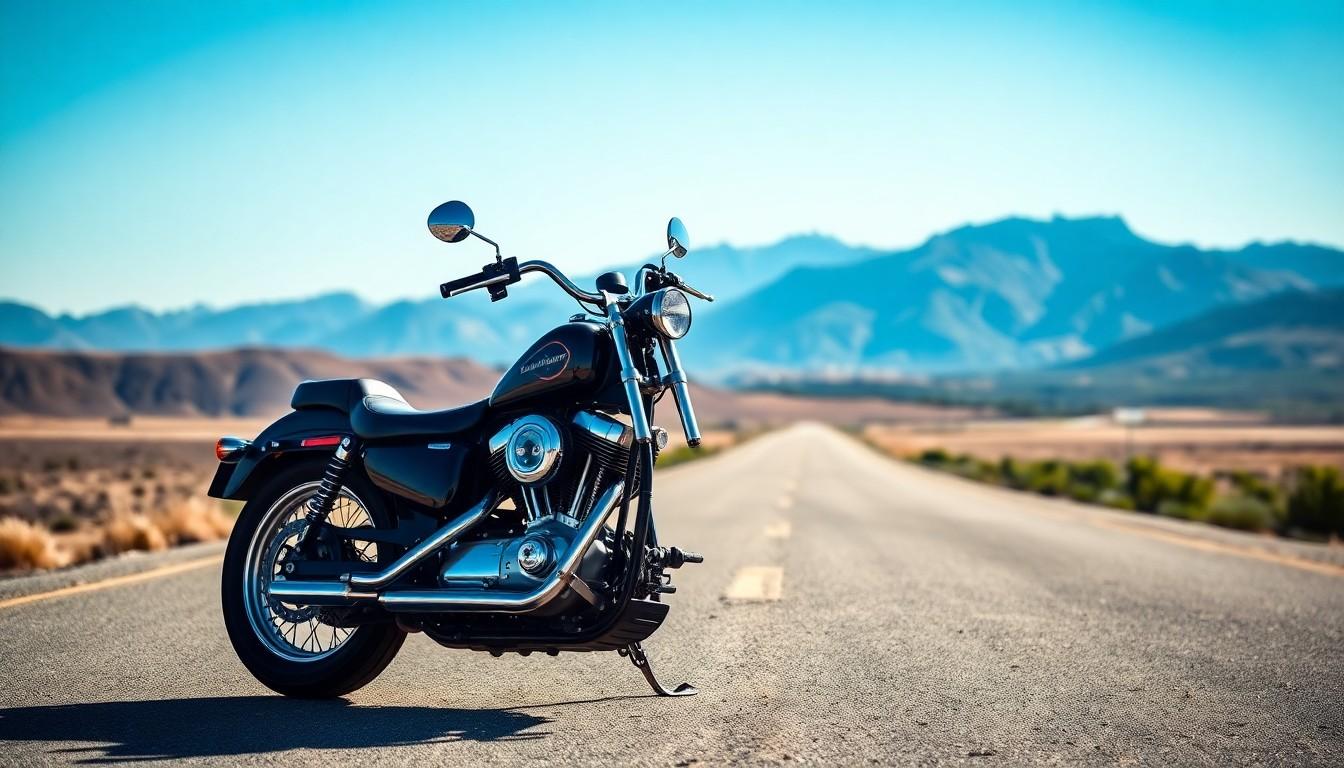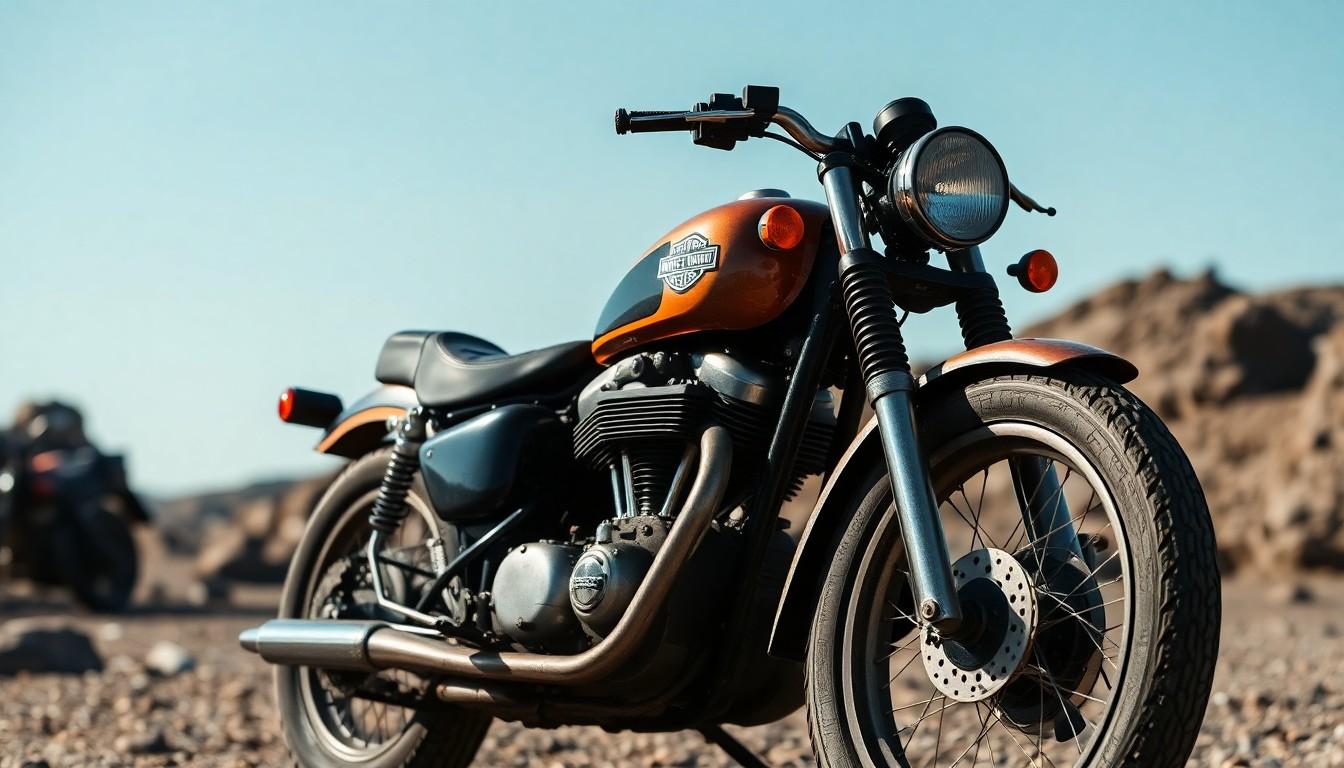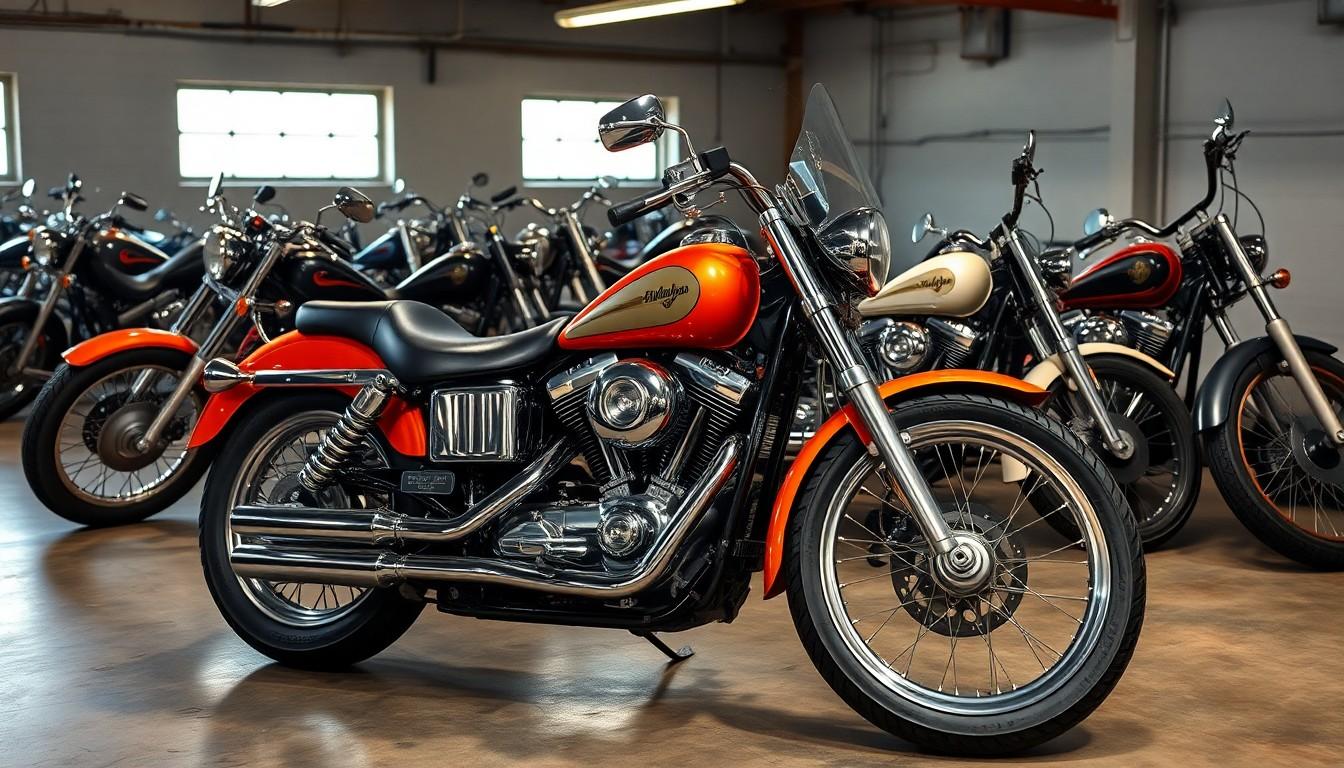Looking to buy a Harley-Davidson Sportster but unsure which model year delivers the best bang for your buck? We’ve got you covered with our comprehensive breakdown of the standout winners and disappointing duds from this iconic motorcycle lineup.
Since its debut in 1957, the Sportster has evolved dramatically through technological advances, design shifts, and performance upgrades. While some years produced legendary machines that riders still covet today, others faced reliability issues and underwhelming performance that savvy buyers should avoid. Understanding these differences can save you thousands and ensure you ride home on a Sportster that’ll deliver years of satisfaction rather than frustration.
The Iconic Harley-Davidson Sportster: An Overview
The Harley-Davidson Sportster has earned its place as one of the most enduring motorcycle models in American history. Introduced in 1957, this iconic bike has undergone many transformations while maintaining its distinctive character and appeal. Motorcycle enthusiasts recognize the Sportster for its nimble handling, accessible power, and classic styling that bridges the gap between entry-level riding and full-sized cruisers.
Over its 65+ year production run, the Sportster has evolved through multiple generations, each with unique characteristics that define their place in the model’s history. Harley-Davidson continuously refined the platform through engine upgrades, frame modifications, and styling changes that reflect both technological advancements and market demands. Changes in displacement options have ranged from the original 883cc to larger 1200cc variants, giving riders options based on their performance preferences.
The Sportster’s core design elements—a V-twin engine, peanut tank, and stripped-down aesthetics—have remained consistent even though these evolutions. Production numbers for Sportsters typically exceed other Harley models, making them more accessible in the used market for collectors and first-time Harley owners. Various sub-models including the Iron, Forty-Eight, Roadster, and Low have catered to different riding styles and aesthetic preferences while maintaining the fundamental Sportster DNA.
Understanding the Sportster’s historical development provides crucial context for identifying which model years represent the pinnacle of design and which suffered from notable issues. Key transitions in the Sportster’s timeline include the shift from ironhead to evolution engines, the introduction of rubber mounting to reduce vibration, and the implementation of fuel injection systems. Each of these engineering milestones marks important moments in the Sportster’s development and directly impacts the riding experience.
Golden Era: The Best Sportster Years

The Harley-Davidson Sportster has experienced several standout periods throughout its production history. These golden eras represent times when technological innovations, engineering improvements, and rider-focused designs converged to create exceptional motorcycles that continue to be sought after by enthusiasts.
1986-1990: The Evolution Engine Revolution
The Evolution engine introduction in 1986 marked a groundbreaking period for the Sportster lineup. This revolutionary powerplant delivered significantly improved reliability, reduced maintenance requirements, and a noticeably smoother riding experience compared to its predecessors. Sportsters from this era perfectly balanced traditional Harley-Davidson character with modern engineering advances, making them highly desirable among collectors and riders alike. Many enthusiasts consider these models the first truly modern Sportsters, offering the authentic H-D experience without the common reliability concerns of earlier generations.
2004-2006: The Rubber-Mounted Glory Days
Sportsters received a game-changing upgrade in 2004 with the introduction of rubber-mounted engines. This engineering enhancement dramatically reduced vibration throughout the motorcycle, creating a much more comfortable riding experience without sacrificing the raw character that defined the model. The 2004-2006 Sportsters represent an ideal balance point between classic styling and modern comfort, particularly appealing to riders planning extended journeys or daily commuting. These models retain their value exceptionally well in the used market due to their reputation for combining performance with long-distance rideability.
2007-2013: Fuel Injection and Refinement
Fuel injection technology arrived on the Sportster platform in 2007, ushering in another golden era of performance and reliability. This advanced fuel delivery system eliminated carburetor-related issues while improving throttle response, cold-starting capability, and overall fuel efficiency. Sportsters from 2007-2013 benefited from continuous refinements in both technology and design, making them more versatile and rider-friendly than any previous generation. These models appeal to both everyday commuters and touring enthusiasts thanks to their dependable performance, improved components, and the maintenance simplicity that fuel injection provides.
Challenging Times: The Worst Sportster Years

While the Harley-Davidson Sportster has enjoyed many successful iterations throughout its history, certain production periods have been plagued by mechanical issues and design flaws. These problematic years represent the low points in the Sportster’s otherwise stellar legacy, offering valuable lessons for both the manufacturer and potential buyers.
1970-1976: The AMF Troubles
The AMF era marks one of the darkest chapters in Sportster history. American Machine and Foundry’s acquisition of Harley-Davidson led to a important decline in quality control and craftsmanship. Bikes manufactured during this period frequently suffered from oil leaks, electrical system failures, and premature component wear. Production speed was prioritized over quality, resulting in inconsistent assembly and subpar parts. Many enthusiasts consider these motorcycles less reliable and of noticeably lower quality compared to models produced both before and after this troubled period. Riders often report vibration issues, frame weaknesses, and poor finishing details on AMF-era Sportsters.
1980-1981: The Notorious Years
The 1980 and 1981 Sportsters stand out as particularly problematic in the model’s history. Their solid-mounted engines created excessive vibrations that caused rider discomfort and contributed to component fatigue. Electrical system failures were common, leaving riders stranded with no warning. Front fork leaks plagued these models, compromising handling and safety. Frame cracking became a serious concern, especially under stress or after extended use. The 1981 model earned particular notoriety, with motorcycle publications labeling it “the worst-handling motorcycle of all time” due to its unpredictable behavior at various speeds.
1991-1993: Transition Troubles
This period represented a challenging transitional phase as Harley-Davidson refined its technologies and production methods. Mechanical inconsistencies appeared more frequently during these years, creating frustration for owners. Engine performance issues included rough idling and unexpected power delivery in some units. Electrical components showed reliability problems, particularly in starting systems and lighting circuits. Transmission complaints increased, with riders experiencing difficult shifting and occasional gear slippage. Though not as catastrophic as the AMF or early 1980s models, these Sportsters still demonstrated enough problems to warrant caution from potential buyers.
2014-2016: Emission Struggles
Stringent emissions regulations created new challenges for the Sportster line during this period. Engineers faced the difficult task of maintaining performance while meeting increasingly strict environmental standards. Fuel mapping adjustments led to throttle response issues in some riders’ experiences, creating a less intuitive connection between rider input and engine output. Heat management became more problematic as emission controls affected engine temperature regulation. Performance compromises were noticeable to experienced riders familiar with earlier, less restricted models. Though benefiting from modern features like rubber-mounted engines and fuel injection, these years represent a period where regulatory compliance sometimes overshadowed the riding experience.
Collector’s Perspective: Most Valuable Sportster Years

For collectors and enthusiasts, certain Harley-Davidson Sportster models command premium prices due to their historical significance, limited production numbers, and unique features. These coveted bikes represent key moments in the evolution of this iconic American motorcycle.
Early Models (1957-1969)
Original Ironhead engines from 1957 to 1969 rank among the most sought-after Sportsters in the collector market. These first-generation models carry immense historical importance as they established the Sportster legacy that continues today. Collectors particularly value these early models for their raw mechanical character and the pure riding experience they deliver. The vintage styling elements, including distinctive tank designs and chrome accents, make these motorcycles standout showpieces in any collection.
Transition Years
Models manufactured during pivotal transition periods hold special appeal for discerning collectors. The 1984 Sportsters introduced a revolutionary frame design that dramatically improved handling characteristics while maintaining the classic Sportster profile. Similarly, 1987 models featured important front-end improvements that enhanced stability and rider confidence. These motorcycles represent crucial evolutionary steps in Sportster development, documenting the brand’s commitment to refinement while honoring tradition. Collectors recognize these transition-year bikes as important markers in Harley-Davidson’s engineering journey.
Limited Editions and Anniversary Models
The 50th Anniversary Sportster released in 2007 stands as one of the most valuable collector models, combining commemorative status with the introduction of fuel injection technology. This limited production run featured exclusive badging, special paint schemes, and unique trim details unavailable on standard models. Other highly prized special editions include the Sportster 1200 Custom and Sportster 883R, which incorporated distinctive styling cues and performance-oriented components. Limited production numbers ensure these motorcycles maintain strong value appreciation over time. Collectors actively seek these rare variants for their exclusivity and the statement they make within a comprehensive Harley-Davidson collection.
The Modern Sportster: 2021 and Beyond

The modern Sportster lineup received a complete redesign starting in 2021 with the introduction of the Sportster S. Harley-Davidson equipped these newer models with the Revolution Max 1250T engine, delivering significantly more power and performance than previous generations. This revolutionary powertrain represents a dramatic departure from the Evolution engine that powered Sportsters for decades.
Modern Sportsters feature advanced technology that elevates the riding experience beyond what was available in earlier models. The electrical systems have been completely overhauled to support more sophisticated electronics, including improved instrumentation and connectivity options. Suspension components received substantial upgrades, offering better handling and a more comfortable ride. Enhanced safety features like advanced ABS and traction control systems provide riders with greater confidence on the road.
Reliability improvements mark another important advancement in the 2021 and newer Sportsters. These bikes benefit from decades of engineering refinements and technological advancements, resulting in motorcycles that require less maintenance while delivering more consistent performance. The elimination of common issues found in earlier generations makes these models particularly attractive to riders seeking trouble-free ownership experiences.
The Revolution Max platform represents Harley-Davidson’s commitment to evolving the Sportster while maintaining its essential character. Though distinctly different from its predecessors, the modern Sportster continues to embody the spirit that made the model line an icon for more than 65 years. Its combination of cutting-edge technology and authentic Harley-Davidson DNA creates a motorcycle that appeals to both traditional enthusiasts and new riders discovering the brand for the first time.
Conclusion
The Harley-Davidson Sportster’s 65+ year legacy showcases both brilliant engineering triumphs and challenging periods. From the golden eras of the Evolution engine to the rough AMF years we’ve mapped the journey to help you make an informed purchase.
Whether you’re drawn to the collectible early models the comfortable rubber-mounted engines of 2004-2006 or the revolutionary new direction of the Revolution Max platform there’s a Sportster that fits your riding style and budget.
We hope this guide helps you navigate the Sportster lineup with confidence. The right year model can provide decades of riding joy while the wrong choice might lead to frustration. Armed with this knowledge you’re now ready to find your perfect Sportster and join the storied tradition of this iconic American motorcycle.
Frequently Asked Questions
What years are considered the best for Harley-Davidson Sportsters?
The golden eras for Harley-Davidson Sportsters are 1986-1990 (introduction of the Evolution engine), 2004-2006 (rubber-mounted engines for improved comfort), and 2007-2013 (fuel injection technology). These periods offered the best combination of reliability, performance, and rider comfort, making them particularly desirable for buyers seeking quality Sportsters.
Which Sportster years should buyers avoid?
Buyers should be cautious with Sportsters from the AMF era (1970-1976) and years 1980-1981, 1991-1993, and 2014-2016. These periods were marked by various mechanical issues, design flaws, and reliability problems. Researching specific issues for these model years before purchasing can help avoid potential headaches and costly repairs.
What makes early Sportsters (1957-1969) valuable to collectors?
Early Sportsters (1957-1969) are highly valued for their historical significance, relative rarity, and pure mechanical character. These models represent the original vision of the Sportster and feature iconic design elements that defined the model. Their limited production numbers and status as the foundation of the Sportster legacy make them particularly desirable among collectors and enthusiasts.
How did the Sportster change with the Evolution engine?
The Evolution engine, introduced in 1986, marked a revolutionary improvement in the Sportster lineup. This air-cooled V-twin offered significantly better reliability, reduced oil leaks, and improved performance compared to previous Ironhead engines. The Evo engine’s solid design provided a better power-to-weight ratio while maintaining the characteristic Harley sound and feel that riders love.
What major improvements came with the 2021 Sportster redesign?
The 2021 redesign introduced the Revolution Max 1250T engine, dramatically increasing power output and performance. Modern Sportsters now feature advanced technology including ride modes, traction control, and improved suspension systems. These changes represent the most significant evolution in the model’s history, offering enhanced reliability, safety features, and a riding experience that appeals to both traditional enthusiasts and new riders.
Are older Sportsters reliable for daily riding?
Many older Sportsters, particularly from the Evolution engine era (1986 and newer), can be reliable daily riders with proper maintenance. Models from 2004 onward with rubber-mounted engines offer better comfort for regular use. However, very old models (pre-1986) typically require more frequent maintenance and may present reliability challenges for daily commuting compared to newer iterations.
What makes the Sportster appealing to entry-level riders?
The Sportster appeals to entry-level riders due to its relatively lightweight design, lower seat height, and manageable power delivery compared to larger Harley models. It offers the authentic Harley-Davidson experience in a more accessible package. The bike’s straightforward controls and predictable handling characteristics make it easier for beginners to develop confidence while still enjoying the iconic Harley styling and sound.
How much should I expect to pay for a used Sportster?
Prices for used Sportsters vary widely based on age, condition, and model. Generally, you can find decent used examples from the 2000s for $4,000-$7,000, while newer models (2015+) typically range from $7,000-$11,000. Collector models from the 1960s can command $15,000+ in excellent condition. Always factor in potential maintenance costs when budgeting for older models.

